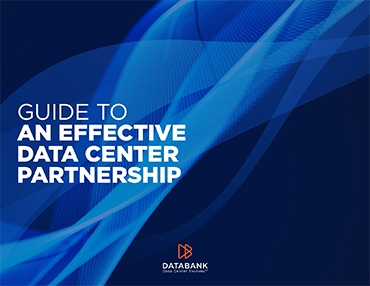Automation has been transforming business operations across all business sectors, including the data center industry. Here is a quick guide to what you need to know about data center automation and its impact.
Understanding data center automation
The term “data center automation” refers to the implementation of software and hardware solutions to streamline and simplify various tasks and processes within a data center environment. Many of these solutions are now powered by artificial intelligence (AI), especially machine learning.
At its core, data center automation aims to reduce manual intervention, minimize human errors, and enhance operational efficiency. By automating repetitive tasks and workflows, organizations can achieve significant improvements in productivity and resource utilization while ensuring consistent performance and reliability.
Key components of data center automation
The process of data center automation can be divided into four key components.
Orchestration
Orchestration involves the coordination and management of multiple automated processes and workflows within the data center infrastructure. It enables the seamless integration of various technologies and tools, allowing for the efficient execution of tasks across different systems and platforms. Orchestration platforms provide centralized control and visibility, facilitating the automation of complex, multi-step procedures.
Provisioning
Provisioning automation focuses on the rapid deployment and configuration of IT resources, such as servers, storage, and networking devices. Through automated provisioning processes, IT teams can dynamically allocate resources based on demand, scale infrastructure up or down as needed, and reduce the time and effort required to provision new services or applications. This ensures agility and flexibility in responding to changing business requirements.
Monitoring
Monitoring automation involves the continuous observation and analysis of data center infrastructure and applications to detect performance issues, anomalies, and potential failures. Automated monitoring tools leverage metrics, logs, and alerts to provide real-time visibility into system health and performance, enabling proactive problem resolution and optimization. By automating monitoring tasks, organizations can identify and address issues promptly, minimizing downtime and improving overall reliability.
Management
Management automation encompasses various administrative tasks and processes related to the configuration, maintenance, and optimization of data center resources. This includes tasks such as software patching, configuration management, compliance auditing, and policy enforcement. Automated management solutions help streamline these activities, ensuring consistency, security, and compliance across the infrastructure while reducing the administrative burden on IT staff.
Benefits of data center automation
Data center automation has gained massive traction due to the many benefits it delivers. Here are five of the main ones.
Improved efficiency
Data center automation optimizes workflows and processes, reducing manual intervention and streamlining operations. Tasks that previously required human intervention can be executed automatically, leading to faster deployment times, enhanced resource utilization, and increased productivity. Automation eliminates bottlenecks and delays, allowing data centers to operate more efficiently and respond rapidly to changing demands.
Reduced operational costs
By automating routine operations such as provisioning, monitoring, and maintenance, organizations can lower labor expenses, minimize human errors, and maximize resource utilization. Additionally, automation enables better energy efficiency and resource optimization, further reducing operational expenses associated with data center management.
Enhanced scalability
With automated provisioning and orchestration, IT teams can rapidly deploy and configure new infrastructure components as needed, ensuring seamless scalability without manual intervention. This flexibility allows organizations to meet fluctuating demand levels efficiently and cost-effectively, without over-provisioning or underutilizing resources.
Increased reliability
By continuously monitoring system health and performance metrics, automation helps prevent downtime, minimize service disruptions, and ensure the high availability of critical applications and services. Automated failover mechanisms and self-healing capabilities further enhance reliability and resilience, minimizing the impact of hardware failures or network outages.
Enhanced security and compliance
Automation can be used to enforce consistent security policies and configurations across the data center environment. Automated security measures such as patch management, vulnerability scanning, and access controls help mitigate security risks and protect sensitive data from threats. Additionally, automation enables rapid response to security incidents.
Best practices for implementing data center automation
Most, if not all, best practices for data center automation essentially boil down to ensuring that there is a suitable level of human oversight. Here are three key examples of what that should mean in practice.
Comprehensive planning and documentation
Before implementing data center automation, it’s essential to conduct thorough planning and documentation of existing processes, workflows, and infrastructure. This includes identifying automation opportunities, defining clear objectives and success criteria, and documenting detailed workflows and dependencies.
Adoption of modular and scalable automation frameworks
Modular automation frameworks allow organizations to build reusable automation components and workflows, enabling flexibility and agility in deploying new services and adapting to changes in business needs. Scalable automation solutions accommodate increasing workloads and infrastructure expansion, ensuring long-term sustainability and efficiency in data center operations.
Continuous monitoring and optimization
Organizations should establish robust monitoring mechanisms to track automation workflows, identify bottlenecks or inefficiencies, and measure key performance indicators (KPIs) such as deployment time, resource utilization, and error rates.







